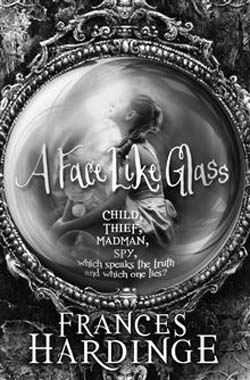Alice fell down a rabbit’s hole and discov- ered a wonderland! Neverfell fell down into Caverna and found a world of darkness that is strangely exquisite, of sinister characters that have a hundred faces without souls and a grotesque underbelly of faceless poor! A Face like Glass by Frances Harding is about Neverfell, who fell into a ‘vat of curdling Neverfell’ and was found by Grandible, the cheese master, who makes fantastic cheese in the dark tunnels of Caverna. ‘Dairymancy’ is the word Harding uses.So fearful is he of the intrigues of the Court and the rivalries of other cheese-makers that he secures himself through innumerable doors and bolts from the others. ‘It is a giant web, Neverfell, full of bright-winged insects. All of them full of their own poison, all entangled, all struggling to live and to kill…’
May 2014, volume 38, No 5

